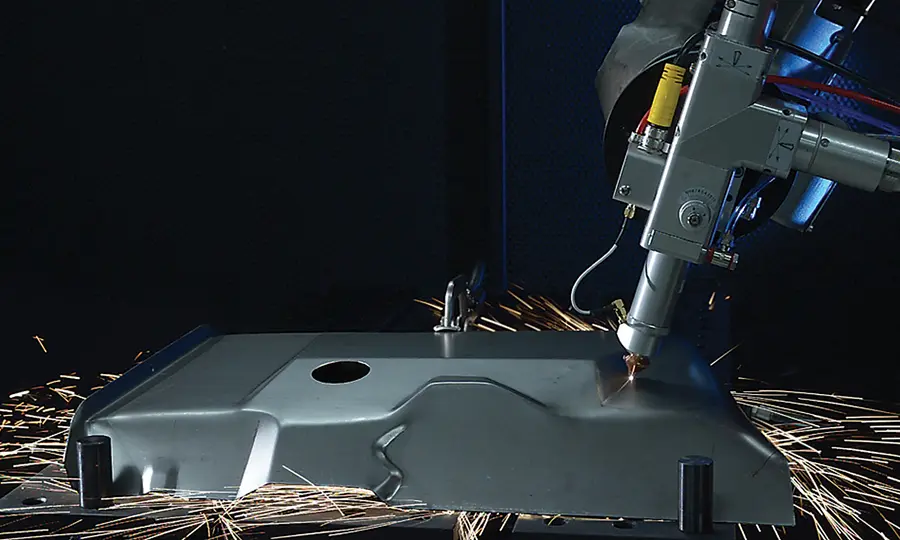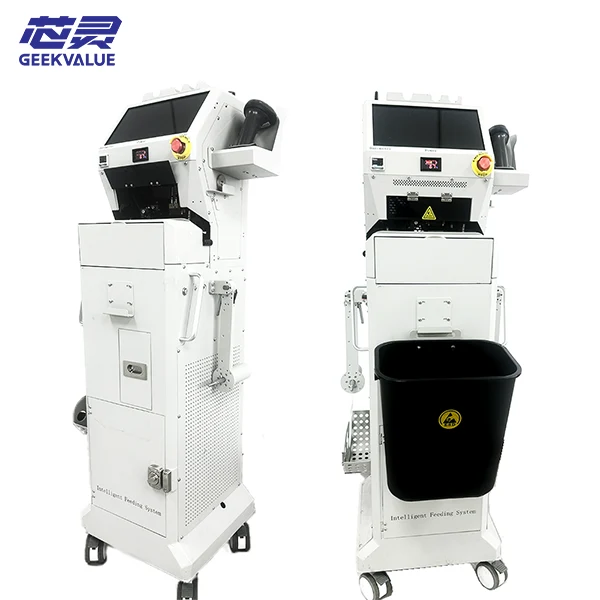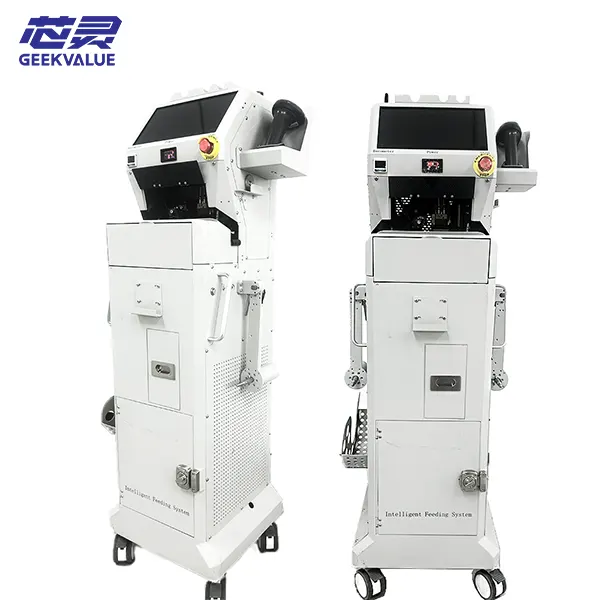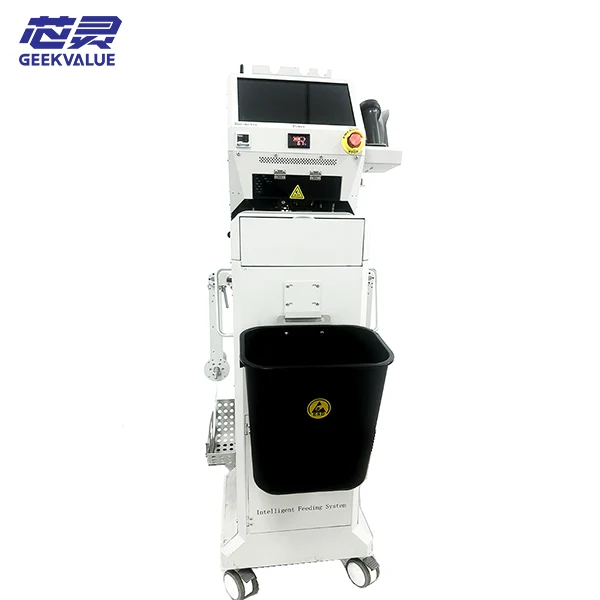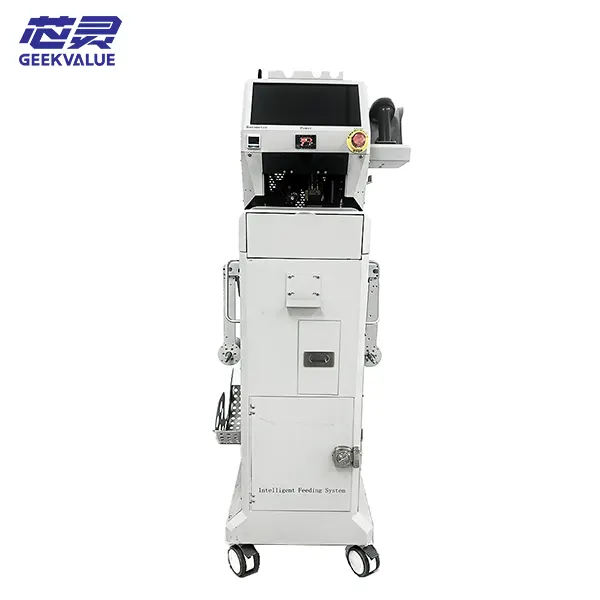DEK E by DEK is a new generation of fully automatic high-precision solder paste printer launched by ASM Assembly Systems (formerly DEK). It is designed for modern SMT (surface mount technology) production lines and is suitable for precision solder paste printing of high-density PCBs (such as mobile phone motherboards, automotive electronics, and 5G modules). This model is further optimized on the basis of DEK TQL, providing higher speed, accuracy, and intelligent functions to meet the needs of Industry 4.0.
2. Working principle
PCB transmission and positioning
The PCB enters the printing position through the transmission track, is fixed by the clamping mechanism, and the high-resolution CCD camera recognizes the Mark point for precise alignment.
Steel mesh bonding
The steel mesh and PCB are bonded by vacuum adsorption or mechanical clamping to ensure no gap (key to affect printing quality).
Solder paste printing
The scraper (metal or polyurethane) pushes the solder paste at a set pressure, angle, and speed, and leaks through the steel mesh opening to the PCB pad.
Demolding and detection
The steel mesh is separated from the PCB (the demoulding speed is adjustable), and some models can be equipped with 3D SPI (solder paste detection) to monitor the printing quality in real time.
III. Core Advantages
Advantages Description
Ultra-high precision ±15μm printing accuracy (Cpk≥1.33), supports 01005 components and 0.3mm pitch BGA.
High-speed production Up to 400mm/s printing speed, line change time <3 minutes, improve UPH (unit hourly production).
Intelligent closed-loop control Real-time adjustment of scraper pressure and demolding speed to ensure consistency.
Modular design Scrapers, visual systems, and cleaning modules can be quickly replaced to reduce downtime.
Industry 4.0 compatible Supports MES/ERP docking to achieve data traceability and remote monitoring.
4. Key Specifications
Parameters Specifications
Maximum PCB size 510 × 460 mm
Printing accuracy ±15μm (3D SPI models can reach ±10μm)
Printing speed 50–400 mm/s (programmable)
Scraper pressure range 5–30 kg (intelligent pressure feedback)
Stencil thickness support 0.1–0.3 mm
Demolding speed 0.1–5 mm/s (adjustable)
Power requirements 220VAC/50-60Hz, 2.0kW
Air source pressure 0.5–0.7 MPa
5. Core features
1. Intelligent scraper system
Adaptive pressure control: Automatically adjust scraper pressure according to steel mesh tension to avoid solder paste leakage or insufficient solder.
Dual scraper design: Supports one-way/two-way printing to meet different process requirements.
2. Advanced visual alignment
10μm-level CCD camera: Supports precise alignment of PCB and steel mesh, and can still be identified even if the mark point is slightly contaminated.
3D SPI integration (optional): Real-time detection of solder paste thickness and volume to prevent defective products from flowing into the patch process.
3. Fully automatic steel mesh cleaning
Multi-mode cleaning: dry wipe, wet wipe, vacuum adsorption combination to reduce solder paste residue (can be set to automatically clean after every N printings).
4. User-friendly design
Touch screen HMI: Graphical operation interface, support one-click recipe call.
Fast line change: PCB size switching fully automatically adjusts to reduce human errors.
VI. Functions and roles
1. Core functions
High-precision solder paste printing: Ensure the welding reliability of fine-pitch components.
Intelligent process optimization: Automatically record printing parameters and recommend the best settings through AI algorithms.
Defect prevention: 3D SPI real-time feedback to reduce rework rate.
2. Role in SMT production line
Improve yield: Reduce welding defects such as cold soldering and bridging.
Reduce costs: Reduce solder paste waste and reduce the need for manual intervention.
Flexible production: Adapt to multi-variety, small batch orders (such as customized automotive electronics needs).
VII. Precautions for use
1. Environment and installation
Temperature and humidity control: 23±3℃, 40-60%RH, to prevent solder paste from drying.
Air source stability: The air pressure needs to be stable at 0.5–0.7MPa, and fluctuations will cause uneven printing.
2. Operation specifications
Solder paste management: Reheat for 4 hours + stir for 3 minutes to avoid agglomeration.
Steel mesh maintenance: Check the tension daily (≥35N/cm²) and clean the openings regularly.
Scraper maintenance: Metal scrapers are replaced every 3 months, and polyurethane scrapers are checked for wear every week.
3. Process optimization
Demolding speed: 0.3–1mm/s is recommended, too fast and easy to pull the tip.
Scraper angle: usually 45–60°, too small an angle affects the tin.
8. Common errors and solutions
1. Error: Vision Alignment Failed
Possible causes:
Mark point contamination or insufficient reflection.
Camera lens is dirty or the light source is abnormal.
Solution:
Clean the PCB Mark point and adjust the light source brightness.
Recalibrate the camera focus.
2. Error: Squeegee Pressure Error
Possible causes:
Squeegee sensor failure or scraper deformation.
Insufficient air pressure causes pressure fluctuations.
Solution:
Calibrate the pressure sensor.
Check the air path and replace the worn scraper.
3. Error: Stencil Clamping Fault
Possible causes:
The stencil is not placed correctly or the clamping cylinder is faulty.
Solution:
Reload the stencil and check the clamping mechanism.
Clean and lubricate the cylinder rails.
4. Error: Pneumatic System Error (pneumatic system failure)
Possible causes:
Insufficient air source pressure or air pipe leakage.
Solution:
Check the output pressure of the air compressor (≥0.5MPa).
Check whether the air pipe interface is leaking.
IX. Maintenance recommendations
Maintenance items Frequency Operation content
Track cleaning Daily Wipe the track with a dust-free cloth to avoid solder paste residue.
Stencil tension detection Weekly Use a tension meter to measure and ensure ≥35N/cm².
Scraper inspection Monthly Check for wear and replace if necessary.
Visual system calibration Quarterly Use a standard calibration board to adjust the camera parameters.
Air filter drainage Monthly Prevent moisture from entering the pneumatic components.
X. Summary
DEK E by DEK is an ideal choice for high-end SMT production lines with ultra-high precision, intelligent control, and Industry 4.0 compatibility. Through standardized operation, preventive maintenance, and rapid troubleshooting, equipment efficiency and printing yield can be maximized. For complex faults (such as servo system errors), it is recommended to contact ASM official technical support or use original spare parts for repair.



